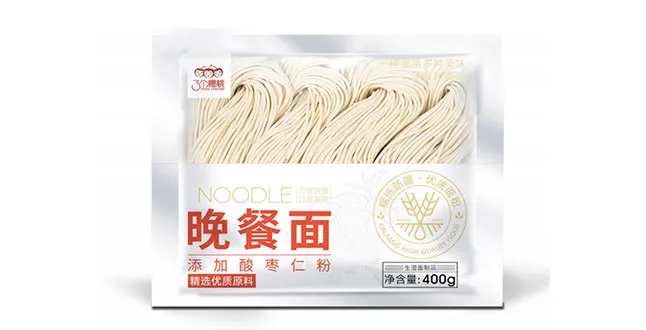instant noodle production
The Production of Instant Noodles A Global Phenomenon
Instant noodles have become a staple food for millions of people worldwide, known for their convenience, taste, and low price. The production of instant noodles is a fascinating process that combines technology, tradition, and global culinary trends. This article delves into the various aspects of instant noodle production, exploring its history, manufacturing process, and impact on society.
A Brief History
The invention of instant noodles is credited to Momofuku Ando, a Taiwanese-Japanese entrepreneur, who first introduced them in Japan in 1958 under the brand name Chikin Ramen. Ando’s innovative idea was born out of necessity; post-war Japan faced food shortages, and he aimed to provide an instant, affordable food solution. His instant noodles gained immense popularity, leading to the establishment of Nissin Foods, which continues to be a leading manufacturer of instant noodles globally. Since then, instant noodles have evolved into various flavors and forms, appealing to diverse consumer tastes across different countries.
The Manufacturing Process
The production of instant noodles involves several key steps, each crucial to ensuring the final product's quality and taste. The process typically begins with the selection of high-quality wheat flour, which is the main ingredient. This flour is mixed with water, salt, and other seasonings to create a dough. The dough is then kneaded and rolled into thin sheets.
Next, the rolled dough is cut into noodle shapes and steamed. This step is vital, as it cooks the noodles partially, allowing them to retain their texture during the frying process. After steaming, the noodles undergo frying in hot oil, which pre-cooks them and gives them their signature texture. The frying process also helps to enhance the flavor and prolong the shelf life of the product.
Once fried, the noodles are drained and cooled, after which they are packaged with dry flavoring powder or sauce sachets. The packaging plays a significant role in maintaining freshness, with many manufacturers now using vacuum-sealed packs or cups to ensure that the noodles remain intact and flavorful until they reach the consumer.
instant noodle production

Innovations in Instant Noodle Production
As consumer preferences evolve, instant noodle manufacturers embrace innovation to stay relevant. Health-conscious trends have led to the introduction of whole-grain noodles, gluten-free options, and products fortified with vitamins and minerals. Additionally, the shift towards sustainability has prompted companies to explore eco-friendly packaging solutions, reducing plastic waste.
Technological advancements also play a pivotal role in the production process. Automated systems and machinery enhance efficiency, allowing manufacturers to produce large quantities of noodles while maintaining consistent quality. R&D departments continuously experiment with new flavors and ingredients, catering to local palates and dietary restrictions, thereby expanding their market reach.
Economic and Cultural Impact
The instant noodle industry has significant economic implications. It creates job opportunities, from manufacturing to distribution, impacting local economies positively. Countries like Indonesia, China, and India are among the largest consumers of instant noodles, with local brands emerging to cater to regional preferences. This local production not only boosts national economies but also fosters national pride and cultural representation in food.
Culturally, instant noodles are more than just a convenient meal; they often symbolize comfort food and nostalgia for many. In various regions, instant noodles are customized with local ingredients and cooking methods. For instance, in South Korea, spicy ramen dishes have gained immense popularity, while in Thailand, noodles are often served with fresh herbs and spices, reflecting the country’s vibrant culinary traditions.
Conclusion
The instant noodle production industry is a remarkable example of how food innovation can lead to global culinary phenomena. From its humble beginnings in post-war Japan to becoming a worldwide staple, the evolution of instant noodles reflects changing consumer preferences, technological advancements, and cultural diversity. As manufacturers continue to innovate and address health and sustainability concerns, instant noodles are likely to remain a beloved culinary choice for many years to come. The journey of instant noodles exemplifies a blend of tradition and modernity, showcasing the power of food to connect people across different cultures and backgrounds.
-
Unleash Your Inner Chef with Delectable Italian Pasta CreationsNewsAug.01,2025
-
Savor Health and Flavor: Irresistible Soba Noodles for Sale Await!NewsAug.01,2025
-
Nourish Your Body with Premium Organic Ramen - A Culinary Delight AwaitsNewsAug.01,2025
-
Elevate Your Dishes with Our Exquisite Kinds of Egg NoodlesNewsAug.01,2025
-
Dive into Flavorful Convenience with Our Ramen OfferingsNewsAug.01,2025
-
Discover Exquisite Types of Naengmyeon and Chilled Soba NoodlesNewsAug.01,2025
-
Is Whole Wheat Pasta Healthy?NewsMay.30,2025
Browse qua the following product new the we

















































































































